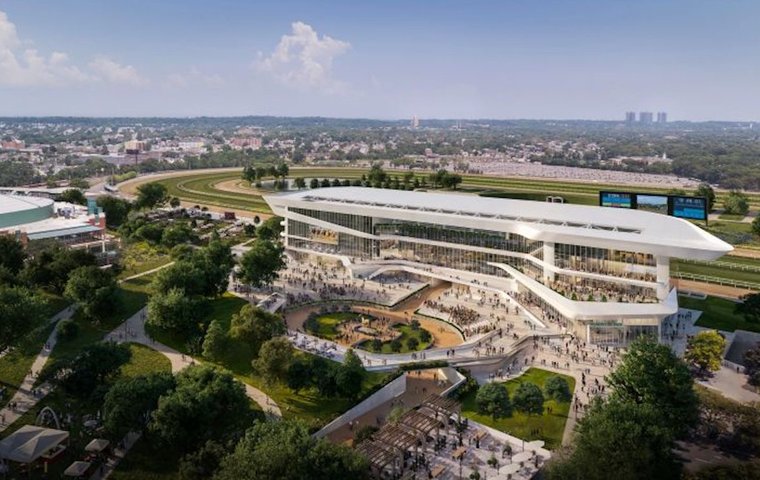
NYRA president and CEO talks about the $455m redevelopment at Belmont Park and the controversial move to Tapeta for the winter, the Breeders’ Cup, the recent stand-off with FanDuel and further matters arising
The avian population of Elmont, New York, right now glimpse apocalyptic scenes when taking their merry jaunt over the remains of the old Belmont Park.
The hulking grandstand has been levelled. The wide sweeping tracks resemble a monumental archaeological dig. But the ambitious redevelopment project – funded with a $455 million loan from the state – is ticking along in a timely fashion.
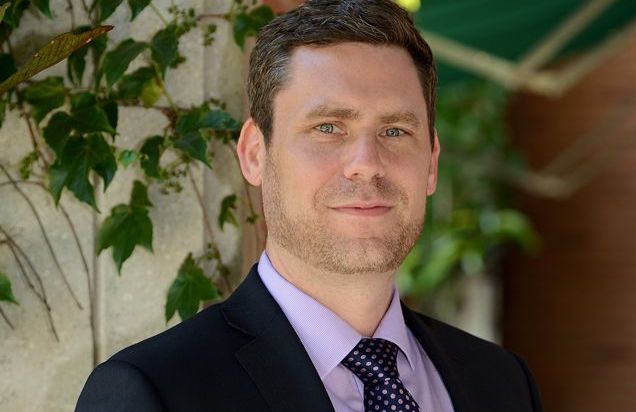 “In fact, the tracks specifically are ahead of schedule,” said David O’Rourke, the New York Racing Association’s (NYRA) president and CEO.
“In fact, the tracks specifically are ahead of schedule,” said David O’Rourke, the New York Racing Association’s (NYRA) president and CEO.
“We're at the point now where if you looked at Belmont on the infield, you'll see the tracks kind of being built from the ground up. The drainage is going in right now. The irrigation's going in right now.
“And as we move into the fall, you'll start to see the sod get planted,” added O’Rourke, 50, who took over his present role in 2019.
“It's kind of an exciting time,” he went on. “Belmont is a magnificent racetrack and it's going to be incredible when we're done.”
As the crusty old Puritan Richard Hooker once observed, however, “change is not made without inconvenience, even from worse to better.”
And one of the changes singled out as a particular inconvenience – especially among members of the betting public – has been NYRA’s plans to use only the track’s new one-mile Tapeta surface for a rough three-month period each winter, once it reopens in 2026.
Safety first
Asked about the various concerns raised since the announcement, O’Rourke explained: “Our objective here is to put the best surfaces for the weather climate that they'll be utilized in. We believe it's safest for the horses.”
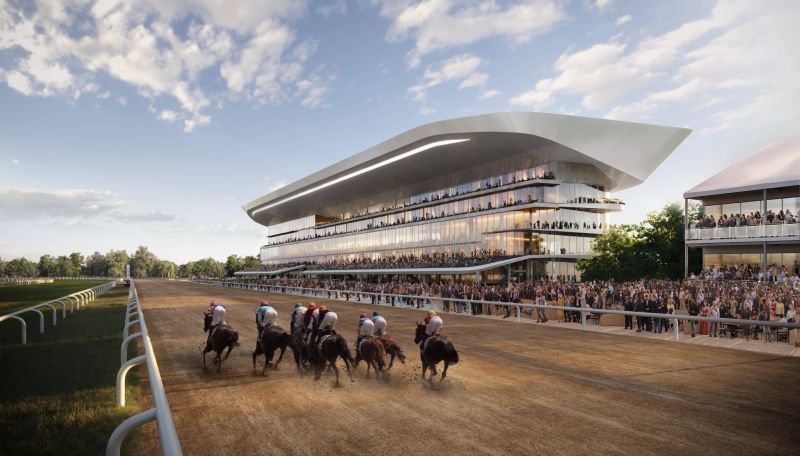 Overall, statistics suggest synthetic surfaces have indeed proven safer than both dirt and turf. While some dirt surfaces in hot dry climates are proving just as safe as all-weather tracks, that’s not the case for dirt surfaces in extreme climates, like those with oppressive heat in the summer coupled with wet, freezing winters.
Overall, statistics suggest synthetic surfaces have indeed proven safer than both dirt and turf. While some dirt surfaces in hot dry climates are proving just as safe as all-weather tracks, that’s not the case for dirt surfaces in extreme climates, like those with oppressive heat in the summer coupled with wet, freezing winters.
NYRA has also crunched the numbers in terms of projected impacts to handle, said O’Rourke. According to this data, last year the average single race handle from January through March was nearly 80% smaller than the average single race handle from April through December. In 2022, that difference was 68%. In 2021, it was nearly 88%.
“Winter racing here, economically, is our most challenging time of year in terms of handle generation, and field size is most challenged in the winter here,” said O’Rourke. “So this changes the composition of that meet.
“There are potential upsides here. What you'll see is typically a slight bump in field size with all-weather, but nothing material in terms of handle.”
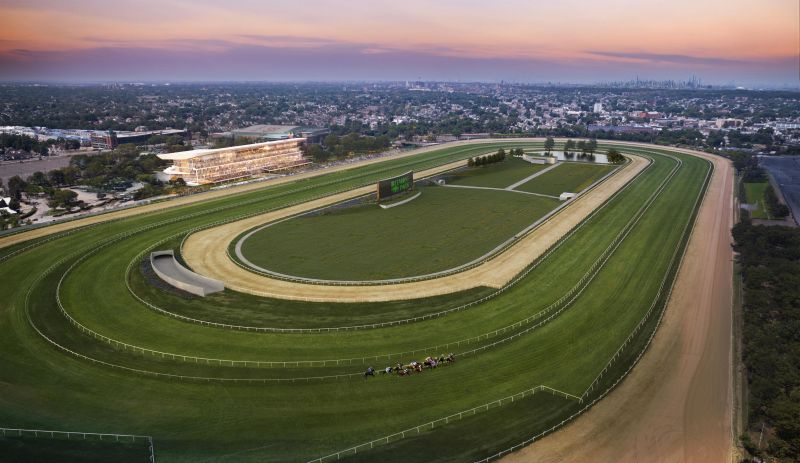 O’Rourke’s claims tally with findings presented at the recent Jockey Club Welfare and Safety summit showing how average field sizes by race on the all-weather were no worse than those on dirt, and that average win/place/show handle was not significantly different per-race on all-weather surfaces versus dirt surfaces.
O’Rourke’s claims tally with findings presented at the recent Jockey Club Welfare and Safety summit showing how average field sizes by race on the all-weather were no worse than those on dirt, and that average win/place/show handle was not significantly different per-race on all-weather surfaces versus dirt surfaces.
Another potential upside from using the Tapeta this way, O’Rourke added, is that it provides a viable alternative to the turf during the winter. It also allows for the composition of Belmont Park’s new main track to mirror that of the dirt surfaces at Saratoga, he added – a decision once again driven by equine safety concerns.
The equine fatality rate on Saratoga’s main track has been consistently lower than the national average for the past three years. According to NYRA, there has not been a catastrophic injury at the Oklahoma training track since 2022.
“It’s the unknown. We haven't raced on [Tapeta] exclusively ever,” said O’Rourke. “Change is never easy – and specifically in horse racing.”
Artfully chosen
Like Belmont Park, Saratoga has also been the subject of a series of facelifts, though more along the lines of artfully chosen nips-and-tucks than a full reconstruction.
“We’ve taken a very methodical approach. I mean, the 1863 [Club] was the largest development here in a generation,” said O’Rourke, of a three-story building that opened in 2019.
“We're dealing with a historic facility here. So, you have to be extremely cautious and prudent on how you add to it,” said O’Rourke, singling out the new Jim Dandy Bar as “the big thing” for this year. “It was received really well during the Belmont Stakes up here, and we think it's going to be an exciting spot to hang out during the races.”
In the lead-up to this summer’s boutique meet, one of New York’s big-name trainers, Chad Brown, issued a bit of a rebuke to the track and NYRA in general, criticizing what he described as an increase in cheaper races carded in lieu of more quality fare.
“When I look at the cards every day, I’m not trying to beat NYRA up but it’s Saratoga,” said local boy Brown, speaking to Horse Racing Nation. “The win totals aren’t going to matter so much to a guy like me if there are so many cheap races on the card.”
Such comments, however, lead invariably to a problem peculiar not just to New York but the industry as a whole – that of the rise of so-called super trainers, the consolidation of horses among fewer and fewer barns (especially at the elite level), and the overall decline of trainers among the lower ranks.
Among the myriad impacts from such a trend is the hit on field size and competitive health. The reasoning goes that if owners distributed their horses – including their better-quality stock – among a wider variety of barns, this would lead to fuller fields and greater competition.
Problem needs addressing
O’Rourke agrees the consolidation of power at the top is a problem that needs addressing. But he held short of suggesting a series of tangible steps to be taken at the individual state-level, including the imposition of stall limits. Rather, he called for an industry-wide “broader conversation” on possible solutions.
“Listen, I understand the issue,” he said. “It’s the solution that's probably going to have to take somewhat of an industry effort to come to and I'm not sure what that is at the moment.
“I am not sure without limiting owner-choice what would be a solution. I understand the stall thing, but people do limit stalls on the tracks during live meets.”
At the same time, O’Rourke pointed out how, a few years ago, NYRA launched a new rule barring no same-trainer entry from drawing into the body of a race to the exclusion of a different trainer’s entrant.
It has since been modified to eliminate the owner-preference aspect. “There was a lot of push-back from owners on that,” he said, of the original rule. (Other stakeholders point out that it proved especially onerous to trainers with similar stock, and to NY-bred focused barns especially.)
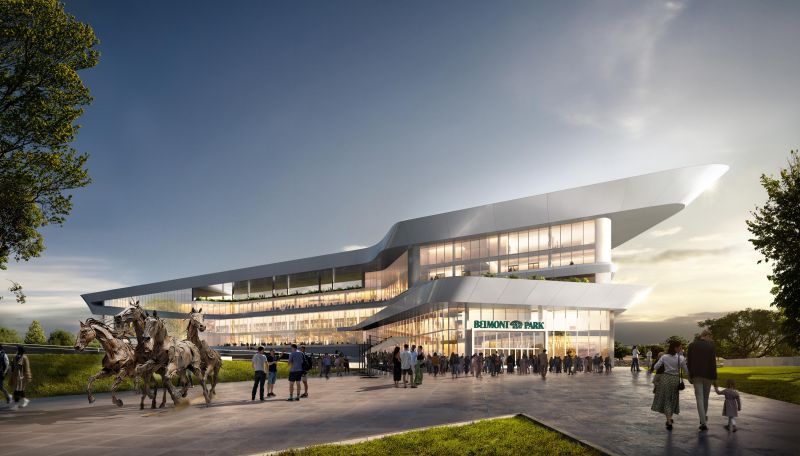 “I think another way of attacking the problem would be to work out how to support the up-and-coming trainers, or the trainers that have less scale and might need more support economically,” said O’Rourke.
“I think another way of attacking the problem would be to work out how to support the up-and-coming trainers, or the trainers that have less scale and might need more support economically,” said O’Rourke.
“Part of that is offering a racing program that spans the spectrum of opportunities, not just here in Saratoga but during the winter at what will be Belmont.”
The economics of the sport are as pertinent in New York as elsewhere – some say more so, thanks to a state with a high cost of living and pricey workers’ compensation demands.
Positive results
Over the past five to ten years especially, a heightened focus on equine welfare and safety has yielded positive results. Indeed, trainers at Saratoga this summer will have access to a new PET scan machine, a sophisticated diagnostic tool adept at catching potentially catastrophic injuries earlier than ever before.
But meaningful welfare measures typically don't come cheap and it's the smaller operators usually most burdened by rising costs. How does O’Rourke see NYRA’s role in navigating the difficult balancing act for trainers and owners in New York of stringent safety standards and a financially viable business model for everyone?
“I've been in this role for five years; I’ve been at the company, though, for 16,” he said. “A goal was to diversify the revenue for the company outside of just the traditional NYRA model.
“We're a nonprofit, so everything that we make goes back into the sport, and so right now, we're looking at where imbalances or opportunities might exist. Specifically, we're focused on the pari-matuel market in New York and trying to bring more money back into the equation.”
Which pivots to the stand-off between NYRA and FanDuel. NYRA had barred the online gambling company from showing its content until FanDuel essentially agreed to pay a larger portion from the handle generated from its New York state residents.
Sizable contribution
The two parties reached an agreement on the eve of the Saratoga meet. Though light on specifics, NYRA’s announcement mentioned how the agreement was incumbent in part upon FanDuel/TVG “making a sizable contribution to the NYRA Foundation to further the impact of non-profit organizations and service providers active in backstretch services, thoroughbred aftercare and more.”
TRC spoke with O’Rourke when the parties were stuck in negotiation limbo. NYRA’s bargaining position, he said at the time, was ultimately built upon a fairer deal for the horsemen.
Indeed prior to this new agreement, O’Rourke said that “what comes back from a bet taken out of New York on an online platform, what comes back into the equation for the horsemen, is a 10th of what you'll see in other jurisdictions.”
The reality is that gambling is moving mobile, said O’Rourke. “It will move towards sports books. They have the marketing power for it, FanDuel being the biggest one,” he said.
“But if you're in a situation where your margins to support the game are so low and you project out that channel shift, which is occurring and will continue to occur five years from now, we're in a really bad spot,” said O’Rourke. “We're trying to bring this issue to the forefront now before it becomes a critical one.”
These comments align with what O’Rourke said about the sport as a whole – of an industry that rested on its laurels as a wagering monopoly for far too long, and is now desperately struggling to shapeshift and play catch-up. “So how does the game evolve now?” he said.
“It has to become more entertainment-event driven for a lot of reasons. You're seeing new building going up in New York. You're seeing new building going up in Maryland. Churchill continues to reinvest in Churchill Downs. And others. “There's a lot of evolution going on in the game. But there are economic challenges.
‘We’re a sport that does not have cohesion’
“We're a sport that does not have cohesion in terms of a league for one,” O’Rourke added. “So, television rights or wagering rights, they're going to change from state to state.
“It's almost like dealing in Europe in a sense. I would like to see more collaboration from the industry itself as a sport to get to an economic model that's rational for everyone. And that's going to take certain groups, including NYRA, to compromise in some areas, and others to compromise in their areas. That's the only way it's going to work.”
A fair barometer of a track’s relative heath appears to be the Breeders’ Cup, last seen in New York when George W Bush was president. According to NYRA’s recent announcement, the Breeders’ Cup has promised to return to Belmont once the redevelopment is complete. When does NYRA hope to set the table?
“I mean, we'd love 2026,” O’Rourke said. “We'll have conversations with those folks over the summer as we'll get more clarity on our goals and as we go into the actual build.
“But yes, we're looking forward to bringing the Breeders’ Cup back to New York. That's a huge deal for us and specifically for our horsemen to get the opportunity to run on the home ground.”
• Visit the NYRA Belmont Park website
View the latest TRC Global Rankings for horses / jockeys / trainers / sires


